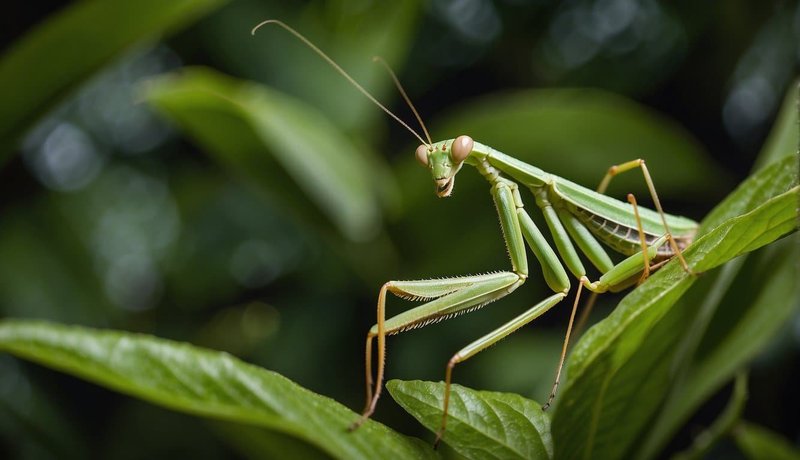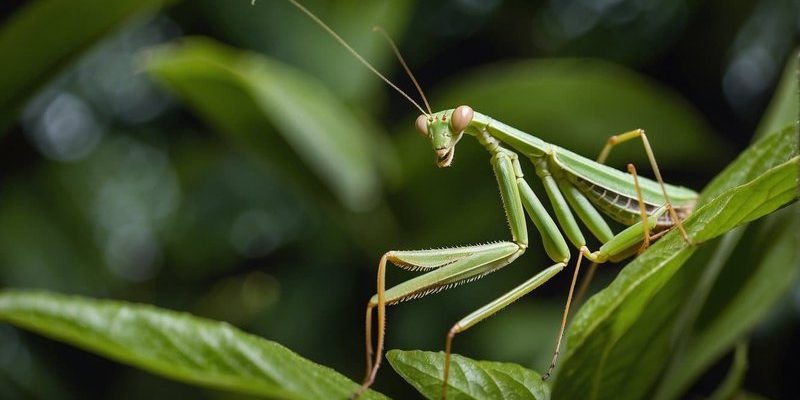
You might wonder why we should care about praying mantises or what they really do. It turns out that these predators have a significant impact on the environment. While they’re best known for their role in pest control, their influence extends beyond that. Let’s dive deeper into the many hats that the praying mantis wears, including its lesser-known job of pollination.
What is Pollination?
Before we get into how praying mantises help with pollination, let’s quickly cover what pollination is. Picture this: plants are like people, needing help to connect with others to reproduce and thrive. Pollination is the process where pollen (the plant’s male gamete) moves from the male structure, called the anther, to the female structure, the stigma, allowing plants to fertilize and produce seeds.
Now, most people think of bees and butterflies when they hear “pollination,” but praying mantises also have a role to play. They move around flowers while hunting for other bugs, and in doing so, they inadvertently transfer pollen from one bloom to another. It’s like they’re the unwitting matchmakers of the plant world, helping flowers find their partners!
The Hunting Skills of Praying Mantises
One of the standout features of praying mantises is their incredible hunting skills. Their triangular heads and bulging eyes give them a wide field of vision, which makes spotting prey a breeze. They’re ambush predators, waiting patiently with their front legs tucked in, ready to snap out and catch unsuspecting insects.
Honestly, watching a mantis hunt is like watching a skilled performance artist. They move with grace and precision, using their sharp mandibles to consume their prey, usually small insects like flies, crickets, and even other mantises! This natural pest control keeps gardens healthy and reduces the need for chemical insecticides. So, you could say that by keeping pests at bay, mantises indirectly contribute to a more balanced ecosystem.
How Praying Mantises Contribute to Biodiversity
Biodiversity is crucial for a healthy planet, and praying mantises play a vital role in maintaining it. When these insects feast on various pests, they help ensure that no single species dominates the ecosystem. This balance allows different plant and animal species to thrive together.
Here’s the thing: mantises don’t just stick to one type of prey. They’re opportunistic feeders, meaning they’ll munch on whatever is available. By controlling various insect populations, they help maintain a diverse array of species, which is essential for ecosystem stability. Think of them as the unsung heroes in the battle for biodiversity!
The Unique Reproductive Habits of Praying Mantises
If you’ve ever seen a praying mantis mate, you might find it a bit shocking. Female mantises are known for sometimes eating their male partners after mating! This behavior, while gruesome, is believed to provide nutritional benefits to the female, helping her produce more eggs.
This unique reproductive strategy might seem harsh, but it’s a real part of their life cycle. After mating, female mantises can lay dozens to hundreds of eggs in a protective case called an ootheca. When the eggs hatch, the tiny mantis nymphs emerge, ready to begin their own lives as predators. It’s a tough world out there, but that’s how they keep their population strong!
Praying Mantises and Their Role in Scientific Study
Praying mantises are more than just a pretty face in nature; they’re also important in scientific research. Scientists study their behavior, ecology, and even their hunting techniques. Their unique physiology and predatory habits make them excellent models for understanding evolutionary processes.
Research into their biology can help us learn about insect control, biodiversity conservation, and even human medicine. For instance, some studies involve examining the mantis’s digestive enzymes as potential sources for developing new treatments. Who knew these little guys could have such a big impact on science?
Why Should We Protect Praying Mantises?
Understanding the various roles that praying mantises play in our ecosystem underscores the importance of protecting them. Unfortunately, their populations can be threatened by habitat destruction, pesticides, and climate change.
Promoting mantis-friendly gardens, which include a variety of plants, helps to create a welcoming environment for them. You might consider planting flowers that attract them while avoiding chemicals that harm them and their food sources. Small changes in how we garden can significantly impact these fascinating creatures and everything they do for the world around us.
The Bottom Line: Embrace the Praying Mantis
So, there you have it: the many roles of the praying mantis, from pollination to pest control and scientific research. These remarkable insects do a lot more for our environment than we often give them credit for. They contribute to biodiversity, improve plant health through pollination, and even inspire scientific inquiry.
Next time you see a mantis in your garden, take a moment to appreciate what it’s doing. They may look like they’re just hanging out, but they’re busy playing important roles in our ecosystem. By supporting their populations, we contribute to a healthier planet, filled with diverse plants and animals. Let’s give a nod to these incredible creatures and the invaluable work they do!

